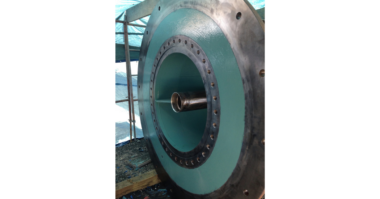Sealing wastewater pumps effectively is essential due to the abrasive and potentially corrosive nature of wastewater, as well as the presence of solid debris. Certain sealing solutions are more suitable than others to ensure the efficient and safe operation of wastewater pumps. Below are some of SEPCO’s best practices for sealing wastewater pumps:
1. Mechanical Seals:
- Double Mechanical Seals: Given wastewater’s potentially abrasive and corrosive nature, a double mechanical seal (also known as a tandem seal) is often preferred. The arrangement provides a clean barrier or buffer fluid between two seal faces, ensuring that the wastewater does not come into direct contact with the outer seal.
- Hard Face Material Combinations: Hard face materials such as silicon carbide against silicon carbide are often recommended due to their increased resistance to abrasion.
2. Cartridge Seals:
- A cartridge seal is a pre-assembled unit that includes all seal components mounted on a sleeve. This design simplifies installation, ensures the components are correctly aligned and offers easy maintenance.
3. Gland Packing or Compression Packing:
- While older wastewater pumps may still utilize braided packing to seal the shaft, this method might require more maintenance (adjustments and occasional repacking). However, modern packing materials, often made of synthetic yarns with PTFE or graphite coatings, can provide a longer-lasting, less maintenance-intensive solution than traditional packings.
- Using lantern rings and flush plans can help keep debris away from the packing and cool the stuffing box.
4. Lip Seals:
- These can be used in some wastewater applications, especially when combined with another sealing method, like a mechanical seal. They prevent contaminants from entering the bearing housing.
5. Bearing Isolators:
- These are non-contacting seals for the protection of pump bearings. They ensure that contaminants from the wastewater do not enter the bearing housing and prevent lubricants from escaping.
6. Seal Materials:
It’s essential to select seal materials that can resist the chemicals, abrasive particles, and general harsh conditions found in wastewater. Materials such as Viton, EPDM, and Nitrile elastomers are often suitable for various wastewater applications.
When choosing the best sealing solution for a wastewater pump, consider factors such as the type of wastewater being processed (e.g., municipal vs. industrial), the presence of solid debris, and the specific chemicals present. It’s also crucial to work with a trusted sealing solutions provider familiar with the challenges of the wastewater industry to ensure optimal seal selection and performance. Periodic maintenance and inspection are key to prolonging the life of the seals and the overall efficiency of the pump system.





Comments